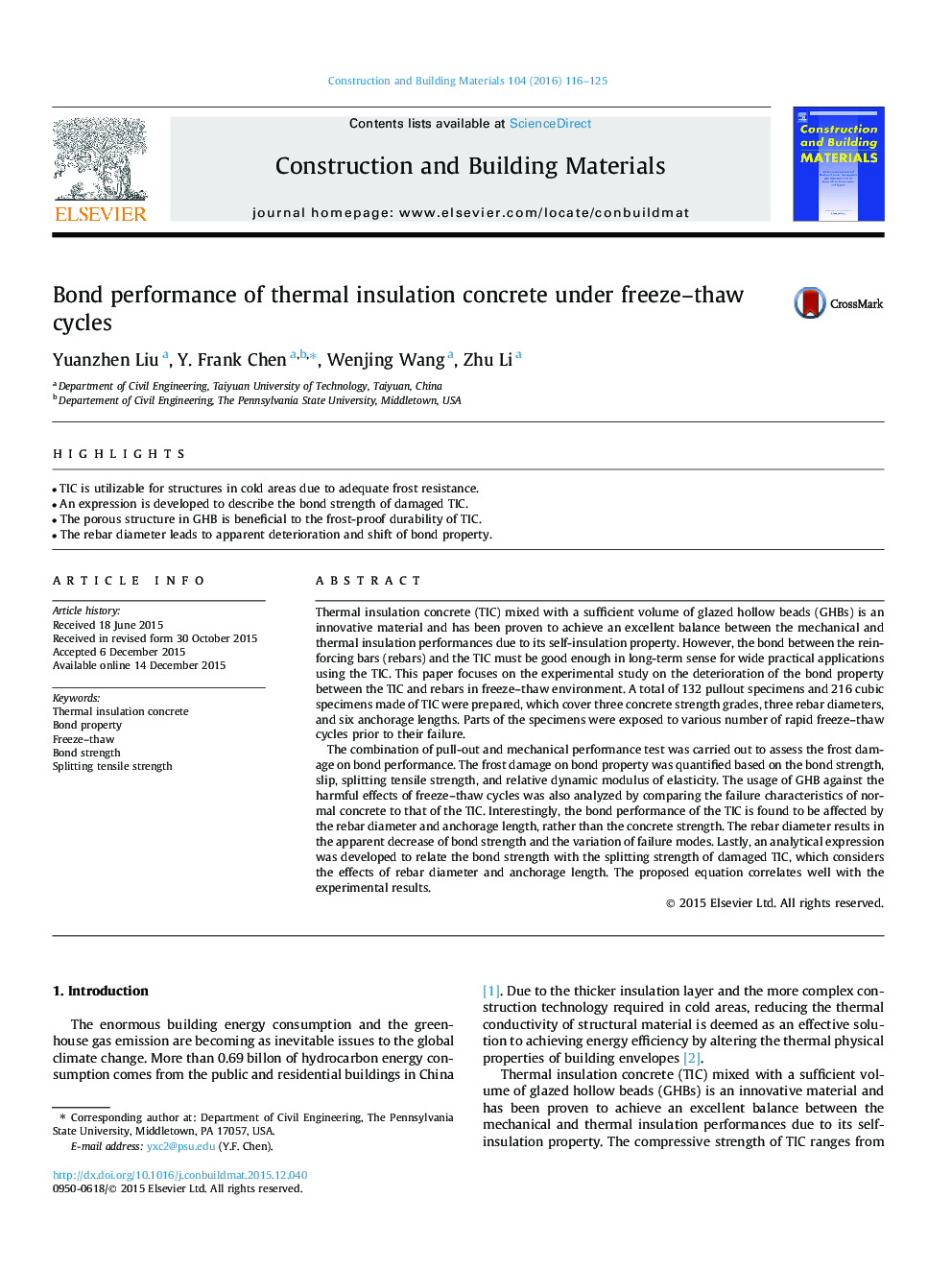| Article ID | Journal | Published Year | Pages | File Type |
|---|---|---|---|---|
| 256305 | Construction and Building Materials | 2016 | 10 Pages |
•TIC is utilizable for structures in cold areas due to adequate frost resistance.•An expression is developed to describe the bond strength of damaged TIC.•The porous structure in GHB is beneficial to the frost-proof durability of TIC.•The rebar diameter leads to apparent deterioration and shift of bond property.
Thermal insulation concrete (TIC) mixed with a sufficient volume of glazed hollow beads (GHBs) is an innovative material and has been proven to achieve an excellent balance between the mechanical and thermal insulation performances due to its self-insulation property. However, the bond between the reinforcing bars (rebars) and the TIC must be good enough in long-term sense for wide practical applications using the TIC. This paper focuses on the experimental study on the deterioration of the bond property between the TIC and rebars in freeze–thaw environment. A total of 132 pullout specimens and 216 cubic specimens made of TIC were prepared, which cover three concrete strength grades, three rebar diameters, and six anchorage lengths. Parts of the specimens were exposed to various number of rapid freeze–thaw cycles prior to their failure.The combination of pull-out and mechanical performance test was carried out to assess the frost damage on bond performance. The frost damage on bond property was quantified based on the bond strength, slip, splitting tensile strength, and relative dynamic modulus of elasticity. The usage of GHB against the harmful effects of freeze–thaw cycles was also analyzed by comparing the failure characteristics of normal concrete to that of the TIC. Interestingly, the bond performance of the TIC is found to be affected by the rebar diameter and anchorage length, rather than the concrete strength. The rebar diameter results in the apparent decrease of bond strength and the variation of failure modes. Lastly, an analytical expression was developed to relate the bond strength with the splitting strength of damaged TIC, which considers the effects of rebar diameter and anchorage length. The proposed equation correlates well with the experimental results.
